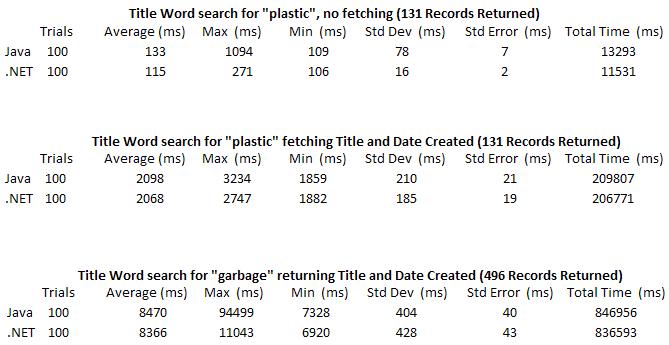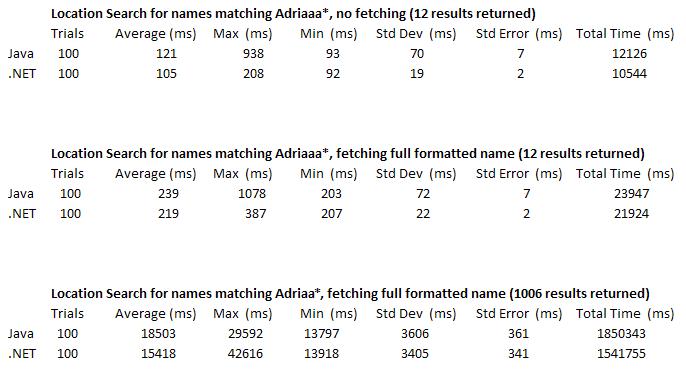Archived Content: This information is no longer maintained and is provided "as is" for your convenience.
Reference
Overview
The intent of this document is to provide a high level overview of TRIM Web Service performance in different environments, in this case .NET and Java. The performance testing was done in a completely contained environment (all on one computer) in order to minimize the interference of outside factors that would affect performance.
The function being profiled is Engine.executeXML(), since this is the most important function when comminicating with the server and most critical to application performance. It also operates identically in both .NET and Java. The XML passed to the .NET and Java versions of executeXML() are always the same.
Since TRIM installations and setups can be so diverse, the testing environment used for profiling is kept as simple as possible. Should these tests be run on a different machine in a different setup, the results would surely vary.
The database behind the TRIM Dataset is Microsoft SQL Server 2005. The dataset itself contains 100,000 records, and contains 25,000 locations. The records and locations in the dataset were pseudo randomly generated with a utility using the TRIMSDK.
In the C# timing source code, the QueryPerformanceCounter kernal function is used for timing, whearas in Java, the System.currentTimeMillis() method is used. Even though the source code used for the profiling is different in .NET and Java, the resolution of the timers is roughly the same.
System (used for both .NET and Java)
- TRIM Context 6.1
- Windows Server 2003 Standard Edition, Service Pack 1
- Pentium IV, 3.2 GHz
- 2.0GB RAM
- TRIM Installation and Services all run locally
- Microsoft SQL Server 2005
.NET
- Visual Studio 2005 Professional Edition
- C# 2.0
- .NET 2.0
Java
- Java 2 Platform Standard Edition 1.5.0
- Eclipse 3.1.2
- WSDL2Java Eclipse Plug-in (http://www.myspotter.com/wsdl2java.shtml)
- Java 5.0 Compliance
Basic Record Searching

Basic Location Searching
